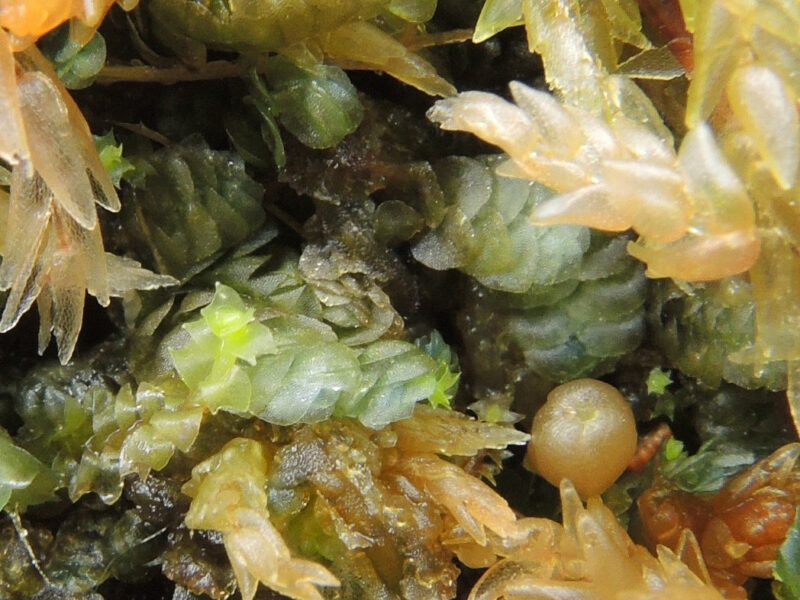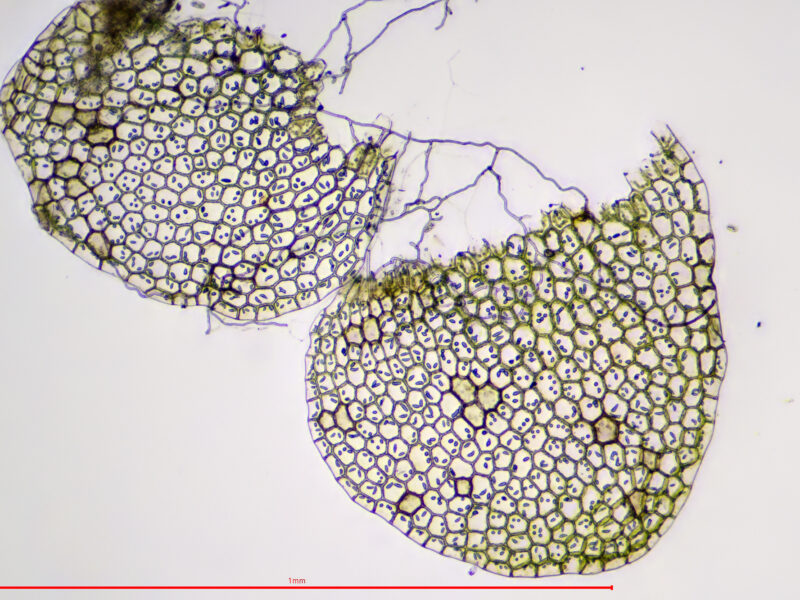Identification notes
This species is morphologically similar similar to some of the commoner species such as C.fissa and especially C.muelleriana, and is found in similar habitats such as bogs, heaths and damp peaty or gravelly banks, and sometimes growing through Sphagnum. It is much less frequent. The leaves are not as commonly bidentate as in C.fissa, and the leaves tend to be more flattened at the apex than C.muelleriana.
The most obvious feature is the uniquely blueish colour, particularly of the shoot apices. This can be subtle sometimes, but microscopy will demonstrate that the colour comes from the lovely oil bodies which are rich in specialised blue-coloured hydrocarbons known as azulenes. The oil bodies can retain their colour for many years. C.muelleriana can sometimes have a blue/grey tint that comes from a much lower azulene content.
Read the Field Guide account










